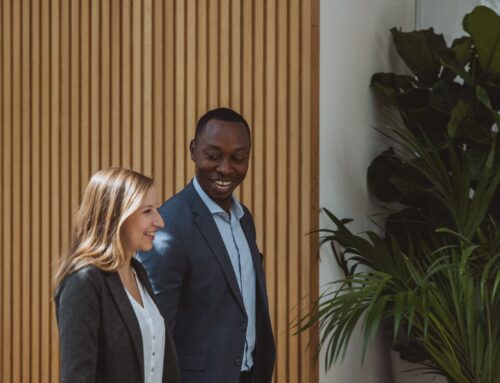Program inspiration, based on Dynamic Loop Method
When hierarchies become low and responsibilities more result- than task-oriented, it’s vital that the concept of sales and customer excitement is not only known to those in the sales department. Therefore, many companies look to bring this “entrepreneurial spirit” to people via development measures. Get inspired by a real-life project from Think Beyond Impact Partner Sotiris Karagiannis, located in the broadband industry.
In this article, you’ll find:
- Initial situation – Business need & success-critical behavior
- Learning approach
- The design phase in detail + tools
- Networking phase implementation
- Core Take-Aways for your programs
Initial situation – Business need & success-critical behavior
The client is an innovation leader in network design solutions focusing on FTTx Network Design and other telco-network-related services. The main driver of their success is the senior expertise of their data-driven engineers, who can design and deliver high-quality, innovative broadband network engineering solutions to public and private entities internationally.
As the company is expanding rapidly, a need has been identified in increasing the number of loyal clients so that new opportunities can arise to sell new services or upsell on existing ones. Because of the highly technical nature of the business portfolio, the engineers discuss projects with clients, and with the support and guidance of the Chief Operations Officer, they follow a project from its start-up to completion.
Upon discussions with the client and the COO, a skills gap was identified in helping the engineering team and project managers to develop a commercial mindset, so they can drive growth by looking at a client opportunity holistically and expand their cooperation with complementary engineering solutions or with entirely new ones.
Learning Approach
A two-day, interactive workshop was offered, fully customized and drawing from real-life examples from the client base of the company. The workshop focused on tangible ways to help the participants change their mindset and understand the necessity to play the role of salespeople alongside their engineering role. Feedback was very positive and all participants felt engaged to actively play their enriched role, after overcoming their initial resistances in terms of how they perceived themselves contributing to the company’s mission.
The Design-Phase in detail + tools
As the main emphasis of the workshop was to develop key sales skills and competencies, together with COO and HR we designed a follow-up strategy to ensure transferability, skills retention, and improvement. A solution-focused coaching intervention was developed with participants meeting regularly with a coach in groups of three for a period of two months initially. The aim of this initial coaching phase was to deal with resistance, fears, and concerns of participants in their transition from pure engineering experts to salespeople with a strong technical background.
Tools used in coaching:
- “The Change House”, a tool originally developed by Claes Janssen in the 1970s that metaphorically brings the concept of change to life and helps coach and clients to understand and deal with the emotions felt when the latter are confronted with a challenging change in their personal and/or professional lives.
- “The VIA Character Strengths Survey”, based on the seminal work of Positive Psychology guru Martin Seligman, to help clients identify their key character strengths that they can apply in their change journey from confusion to renewal and eventual state of flow.
- The key model used in the coaching interventions was the G.R.O.W. model with “The Change House” helping clients to identify and deeply reflect on their current reality with regards to the change they are expected to adopt. All of them appeared to be in the “room of confusion”, having passed the “room of denial”, as they were not sure about the benefits of this change (personal and corporate), beyond the obvious benefit of bringing in more sales.
- Upon this realization, it was agreed that before moving to setting SMART objectives towards adjusting to change and moving away from the “room of confusion” to “the room of renewal”, the Networking Phase was initiated.
Networking phase implementation
Following discussions with the COO and HR, it was agreed that a message for change should be crafted and communicated to the engineers by the CEO in a meeting with a physical and online presence. The message was crafted based on the model of creating readiness for organizational change by Armenakis, Field, and Harris.
The message conveyed a clear explanation of the purpose behind the change, the support by the Senior Management, the assurance of the help the company will provide to the engineers to become competent in sales, and the benefits for them.
At the same time, the COO was offered three 1-to-1 coaching sessions to help him increase his confidence as the agent of change and the leader of the team of engineers. The tool used was drawn from Positive Psychology, specifically “The sailboat metaphor”, that helped the COO understand the full picture of his strengths and weaknesses as a change agent, the risks and challenges associated with the initiative, and set the first SMART goals to keep his team engaged after the communication of the message.
Core Take-Aways for your programs
Stepping out of this case study, the original version of the dynamic loop approach suggests the design phase first – learning content, formats, …. – and then the network phase with learning and development infrastructure. This can make perfect sense. However, I’ve seen it to be mixed up in some projects. As well as a back and forth between both in others. Linearity from phase 1 to phase 5 isn’t always possible, necessary, or even the smartest move.
And that’s also the fascinating part of the Dynamic Loop Approach:
- It gives us a continuous development framework,
- Makes sure we cover all key parts of successful development again and again
- While at the same time giving us the freedom to be always adapting and at the point of what an organization and its people need in a given moment.
References:
Alberts, H.J.E.M. (2016). The Sailboat. Maastricht: Positive Psychology Program.
Armenakis, A.A., et al. (1993). Creating Readiness for Organizational Change. Human Relations 46(6):681-704.
Janssen, C.F.(1996). The Four Rooms of Change, Wahlström & Widstrand.

Sotiris Karagiannis has been helping people embrace positive change at work for the last 28 years. Being inspired by his leading role as Director of the Greek franchise of Dále Carnegie Training in the past, Sotiris brings in his trainings and consultancy a people-centric approach that builds on his clients‘ strengths. His areas of expertise range from leadership development to sales and negotiations, where he brings in best practices from his collaboration with some of the most vibrant industries like pharmaceutical, manufacturing, hotel and leisure, and FMCG.
Sotiris has been a dedicated academic, teaching Strategy on a Master’s level in reputable Business Schools in Europe. He is also an active coach, working closely with the European Mentoring and Coaching Council through which he offers an accredited program for coaches. He is currently working on his Doctorate research to bring new knowledge and insights into the applications of coaching practice in Higher Education. Sotiris has a passion for storytelling and has designed and runs public and in-house workshops for people who want to inspire and positively influence peers and clients.






